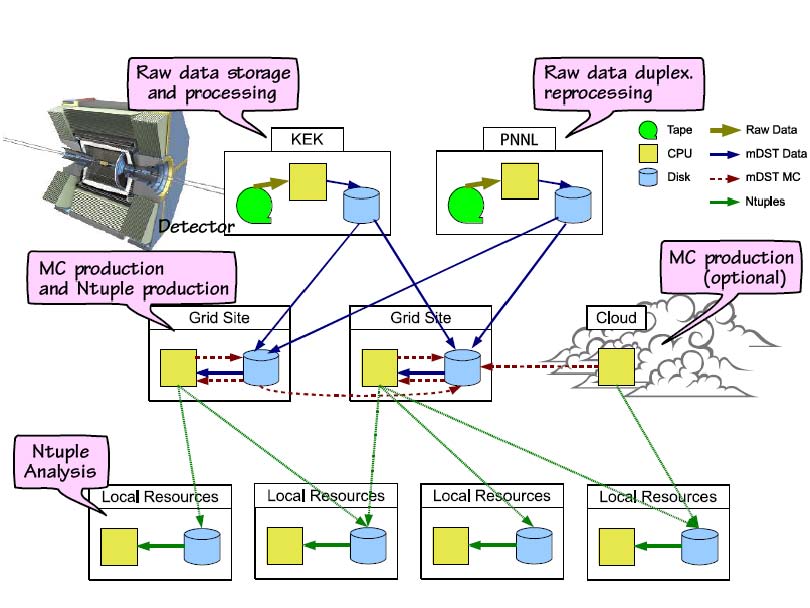The Belle II computing system accomplishes several tasks: raw data processing, Monte Carlo event production, physics analysis and archiving the data resulting from each of the previous steps. It is a distributed system that uses resources in computing centers located in the different participating countries and takes advantage of the modern Grid and Cloud computing techniques.
Raw data coming out of the detector will be stored and processed at KEK. The resulting output (the so called "mDST") will be distributed to the various sites.
Belle II will have one duplicate of the raw data at Pacific Northwest National Laboratory (PNNL)
for safety and to have a reprocessing center outside KEK. In terms of the computing, the first priority at KEK is the raw data acquisition and processing. In addition, at the early stage of the experiment, that is, until the detector performances are well understood, the software and the detector constants will be often updated and consequently the raw data will have to be re-processed frequently. Therefore, another data center with reprocessing capabilities, such as PNNL, is very important for the Belle II experiment.
As the MC production does not need large input files, this task can be distributed easily to the grid and cloud sites. The output format of the Monte Carlo events is the same as that of the mDST from the beam data. The MC samples will be placed on the disks on the grid site where it is produced and at least one replica will be distributed to other grid sites.
Users will perform analysis processes on the mDST files on the grid and will transfer the resulting lighter output (n-tuple) to the local resources.
The amount of hardware needed to store and process the data will increase in time with the amount of data collected by the experiment. The final size of the data set is expected to be of the order of 400 PB and the CPU required to processing it of the order of half a million of HepSpec.
Italy is contributing with resources in data centers located in Bologna (CNAF), Frascati, Napoli, Pisa, and Torino.
